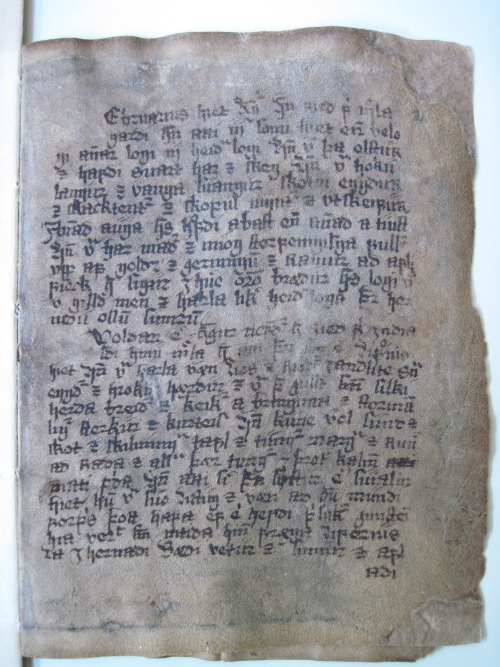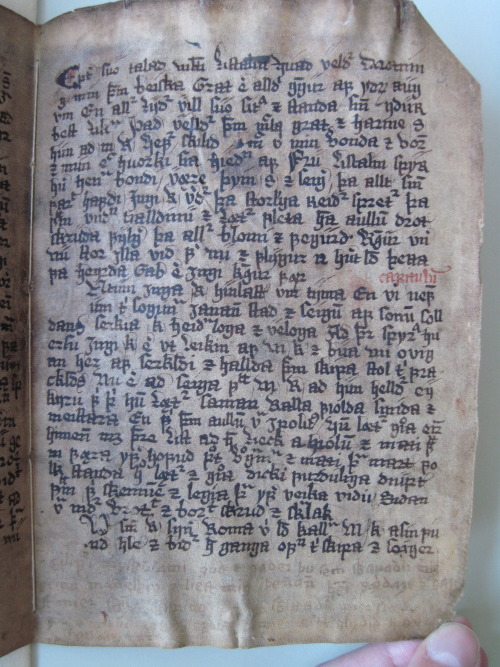smcdwer:Medieval bifolium from an Old Norse saga manuscript: AM 567 4to xviii (1500s).This medieval
smcdwer:Medieval bifolium from an Old Norse saga manuscript: AM 567 4to xviii (1500s).This medieval manuscript fragment is an interesting example I’ve found of a bifolium separated from its quire. This might sound a little technical, but it can be quite simple to understand with a bit of an explanation. In the Middle Ages, manuscripts were put together by folding sheets of vellum (animal skin) and stacking them within each other.Each folded sheet is a bifolium, which created two leaves (folia each leaf has two sides, –– therefore each bifolium makes four manuscript ‘pages’. This photoset shows the four pages of a bifolium, and you can clearly see the centre fold, especially in Photos 2–3 where string secures it to its modern protective paper cover.Now, a number of bifolia together make what is called a quire, or gathering. You could also call it a booklet. It is clear when reading the saga in this example that there are missing bifolia –– missing pages –– because there is a gap in the story from the bottom of the page in Photo 2 to the top of the page in Photo 3. This single folded sheet is all that survives of this particular saga from this particular manuscript; the rest of it is lost.Other interesting things these images show us includemissing initial capital letters at the start of some paragraphs (e.g. Photos 1 and 3; compare with the lightly sketched initial in Photo 2),the beginning of a new chapter set out in red ink (Photo 3),faint traces of other writing in the bottom margins (Photos 3 and 4),the contrast between the hair side of the animal skin (Photos 1 and 4) and the flesh side (Photos 2 and 3),and evidence that this bifolium was used as a scrap, perhaps as part of the cover of another book, before being preserved in its current library home (e.g. the dirty lines and faded text in Photos 1 and 4). -- source link
#medieval#manuscript#norse



